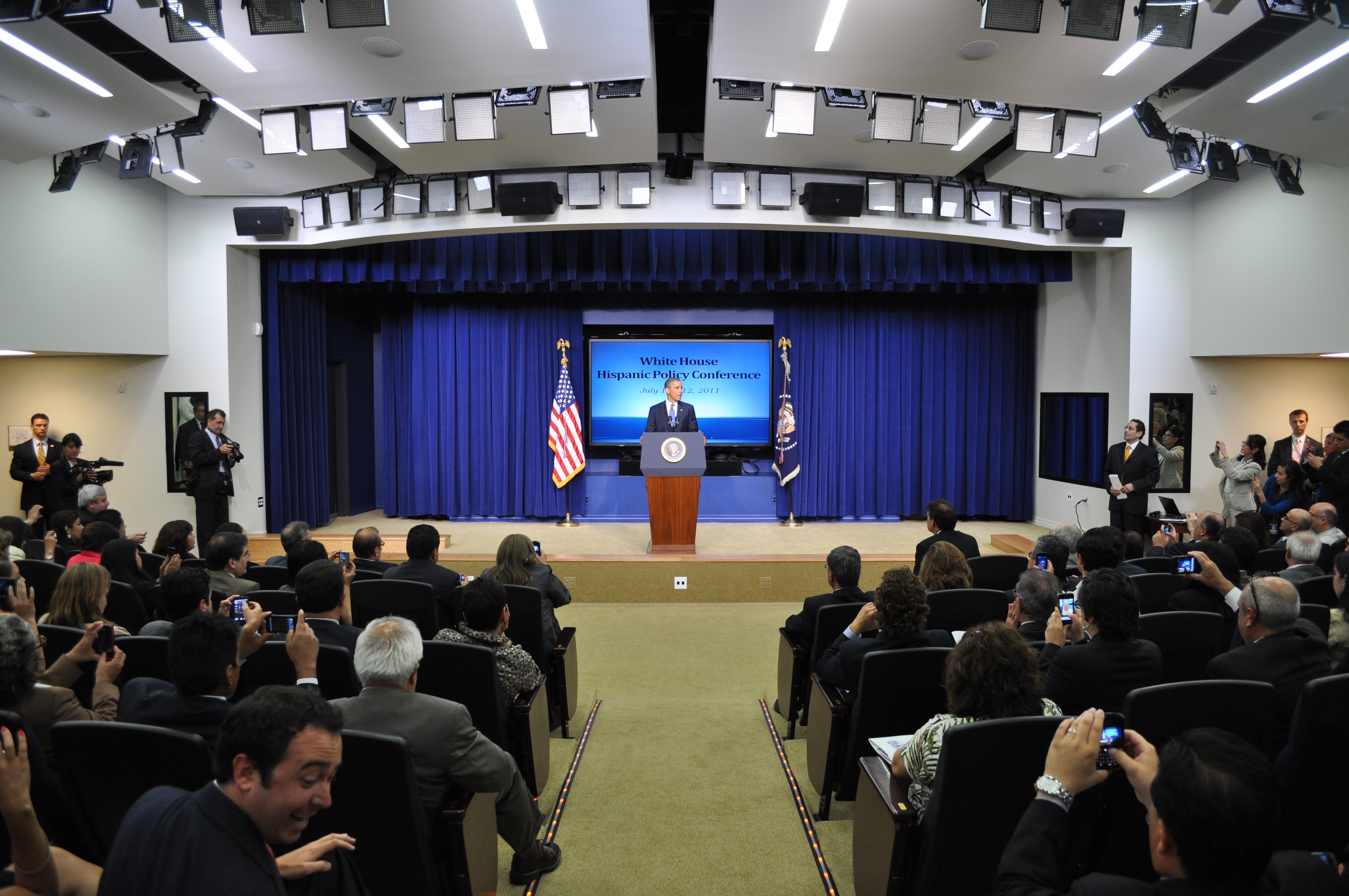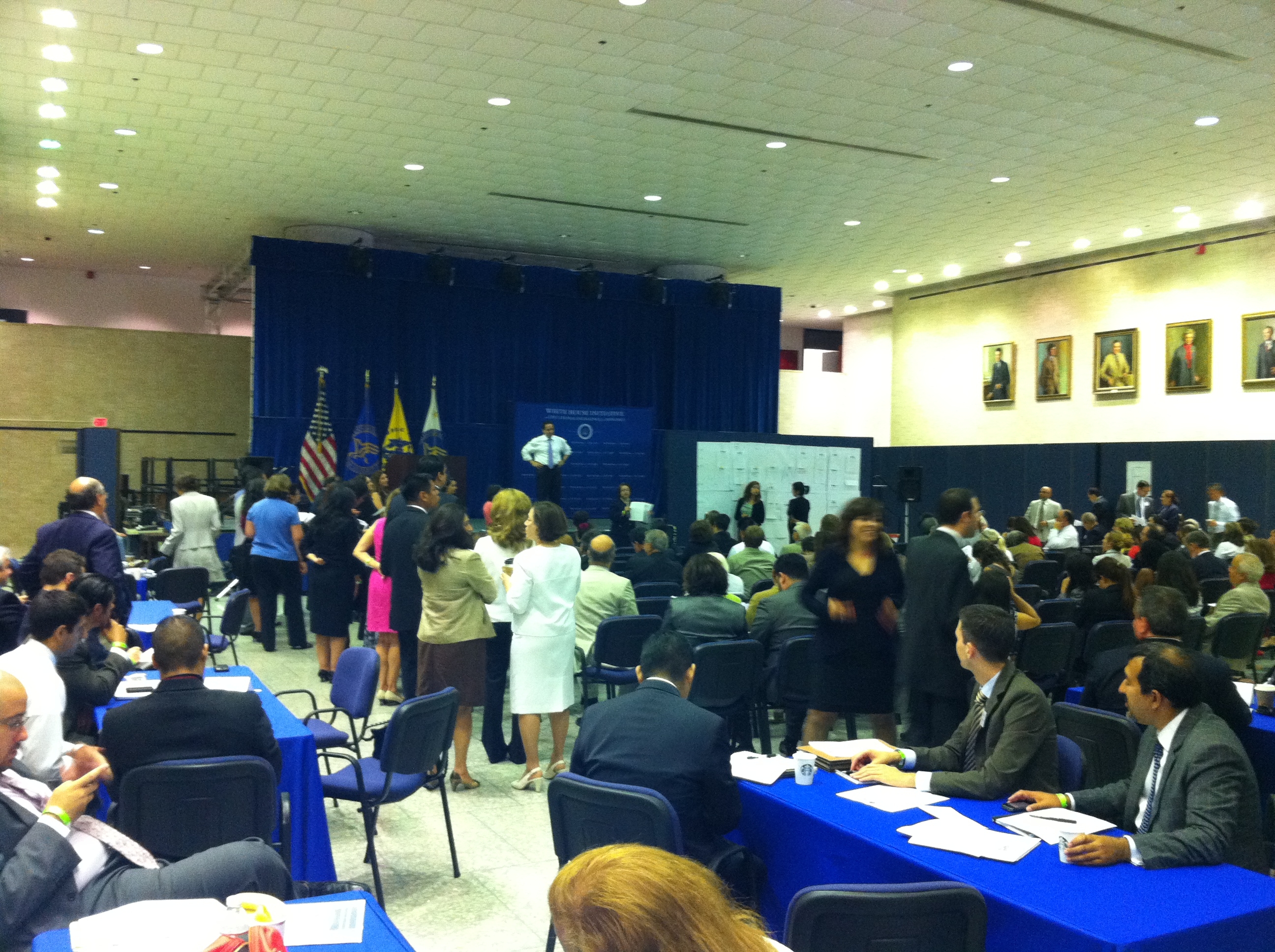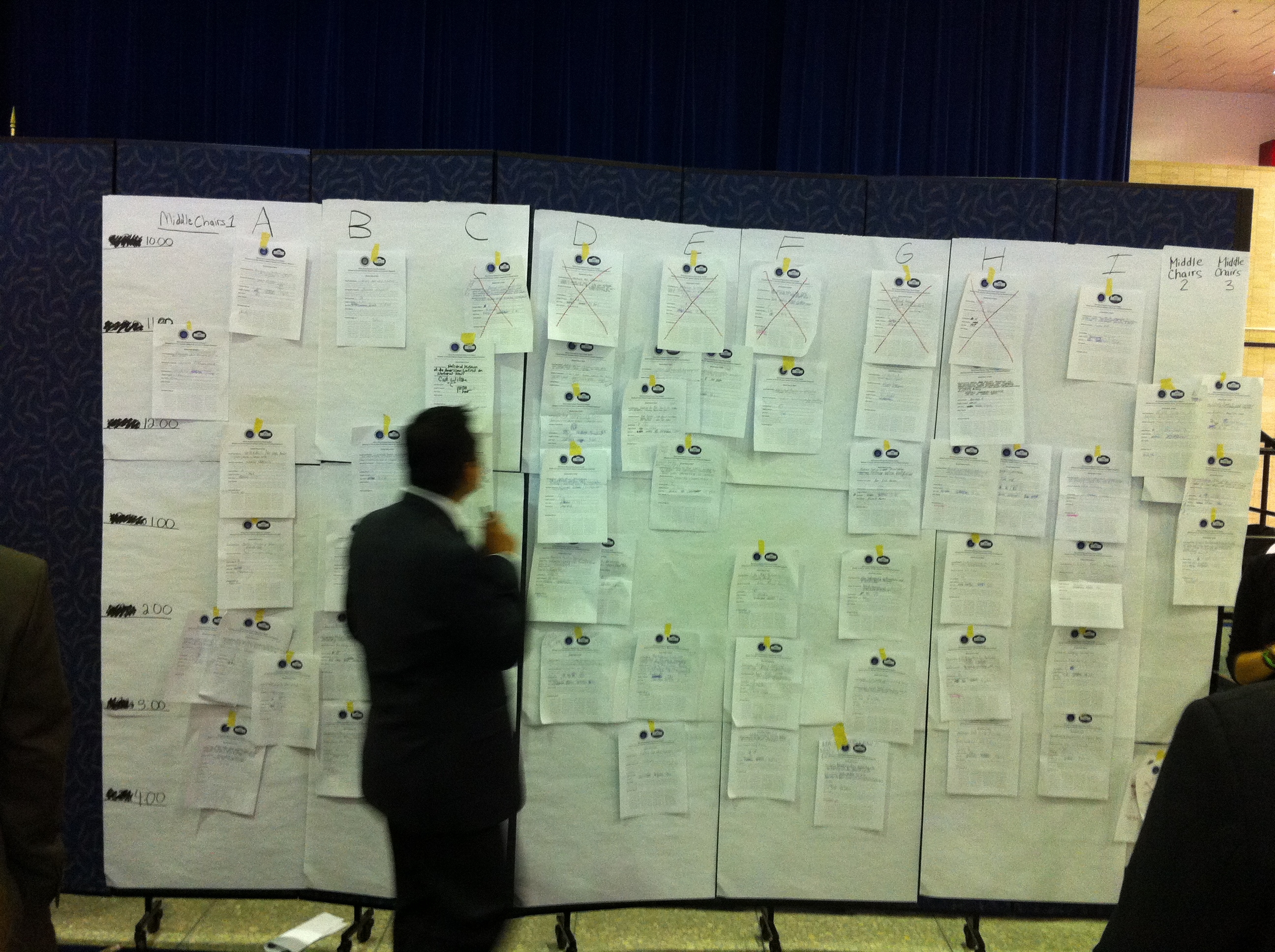
The success of our nation and the success of the Hispanic community are one and the same and our ability to win the future—to out innovate, out educate and out build our competitors—will depend greatly on the success of the Hispanic community.
It’s undeniable. At more than 54 million strong, the most recent census numbers show that the Hispanic community is no longer found in a handful of states, but in every state across the country. As the largest and fastest growing minority group in the U.S. it is critical to the future of our nation—our economy, our education system—that the Hispanic community thrives.
Over the last two days the White House Office of Public Engagement and the White House Initiative on Educational Excellence for Hispanics partnered to host the first ever White House Hispanic Policy Conference. 160 Hispanic leaders from 25 states, D.C. and Puerto Rico joined over 100 Administration officials to discuss the President's agenda and its impact on the Hispanic community and more importantly, to strategize together on how we best move forward together to improve outcomes and access for the Hispanic community.
The purposes of the policy conference were three-fold:
- Relationship Building—Connecting national leaders to key Administration decision makers.
- Obama Administration 101—Ensuring folks gained a deeper understanding of the multifaceted ways this Administration’s agenda connects to the Hispanic community.
- Working Together—Allowing participants to connect with each other and Administration officials to address how we improve access and outcomes for our community.
To make sure both days were valuable to the national Hispanic leaders present, we organized the conference differently than the formats used in the past.
On the first day—Obama 101—held at the White House, we focused on informal, interactive, small group conversations driven by Hispanic leaders, not Administration officials. No lectures. No PowerPoint presentations. No talking points. Just the opportunity for Hispanic leaders to meet, talk, and initiate relationships with senior Administration officials—more than 35 Administration officials participated from 19 White House Offices and Cabinet agencies (and we had to turn away many more officials because of time limitations!)
Five small groups of Hispanic leaders—roughly 30 to 35 individuals per group—spent approximately 25 minutes with 15 different teams of Administration officials from the Council on Environmental Quality, the National Economic Council, the Office of Management and Budget, the Department of Homeland Security, the Small Business Administration, the Department of Education, the Department of Health and Human Services, and more. People loved the new format and greatly appreciated the informal conversation approach as opposed to the standard lecture/presentation approach. They only wished we would have had more time! If we had, we would have had to start at 6:30AM and end at midnight. The day ended with a surprise from the President urging people to take the conversation back to their communities.
The second day, held at the Department of Health & Human Services, used the Open Space Process. This approach is designed for people tired of conferences where speakers don’t cover the issues they want to explore or there isn’t enough time to discuss the topics they do want to discuss. Think of the Open Space Process as a day-long coffee break—that part of a traditional conference where you find the people with whom you really want to connect to talk about the issues most important to you. But instead of taking place solely at coffee breaks or at lunch or dinner before the keynote speaker begins, this happens for the entire day.
Working side-by-side with more than 60 Administration officials, this day-long coffee break began with Hispanic leaders and Administration officials creating the agenda for the day. That’s right—there was no agenda crafted ahead of time. Every person shared the same goal of wanting to improve the quality of life for Hispanics, but how that would be carried out was left completely to the participants themselves.
One key message reaffirmed in the Open Space Process is that the Hispanic community is not a one issue community. While jobs and the economy, education, and health care are the most important challenges named by Latinos nationwide and immigration touches many Hispanics and receives a lot of media attention, the Hispanic leaders gathered here placed a larger number of topics on the table for consideration, reinforcing the idea that many more issues the Administration addresses every day are important to the Hispanic community.
Topics ranged from:
- How community leaders can help to support the efforts around the President’s American Graduation Initiative (a historic initiative to strengthen our nation’s community colleges, and called for five million additional graduates by 2020)
- How communities across the country can support Latina veterans
- How the Latino community can support Latino LGBT youth
- How to effectively engage Latino parents in their children’s education
- How the justice system affects the Latino community
- How to work together to hold the federal government and local law enforcement accountable for adhering to federal immigration enforcement priorities
- How to ensure we are building capacity for non-profits that serve the Latino community
- Immigrant integration
- Supporting efforts to build a Museum of the American Latino
These are just a few topics that were addressed on the second day (there were at least 20 more!).
The best thing about the second day of the conference was the community created amongst the attendees and Administration officials as well as the partnerships and action plans that didn’t exist before the conference. This wasn’t just about asking the government to solve every problem. It was about all of us working together to make things better for the Hispanic community.
Yesterday marked the official end of the two day White House Hispanic Policy conference, but by no means is it the end of the work we’re going to do together. In the final session of the conference Hispanic leaders committed to taking what they learned back home and spreading the word to others. They talked about being re-energized and ready to do whatever needs to be done to get the job done as partners with the Administration. We’ll be there with them—and you—all along the way. Look for us coming to your state soon to keep things moving.
Stephanie Valencia is Associate Director of the White House Office of Public Engagement.
Juan Sepulveda is Executive Director of the White House Initiative on Educational Excellence for Hispanics.





